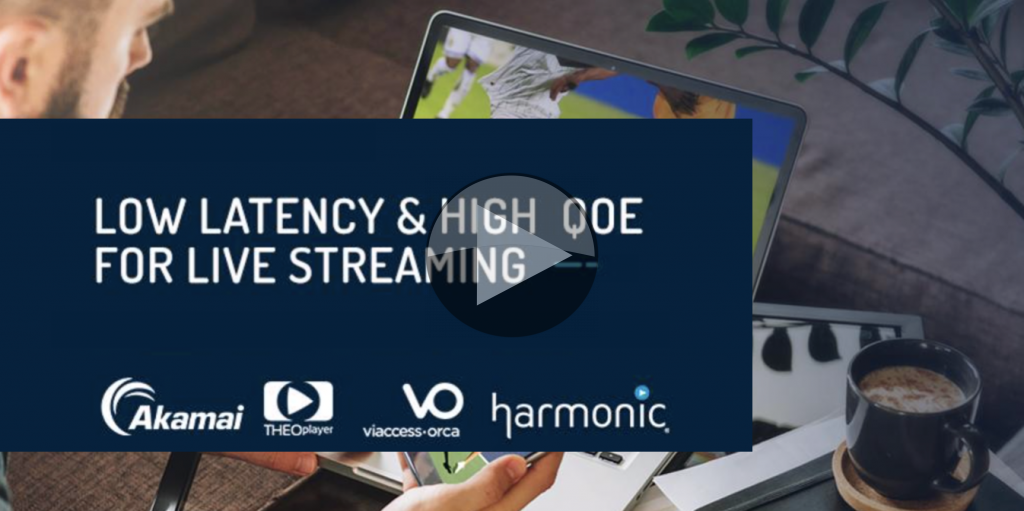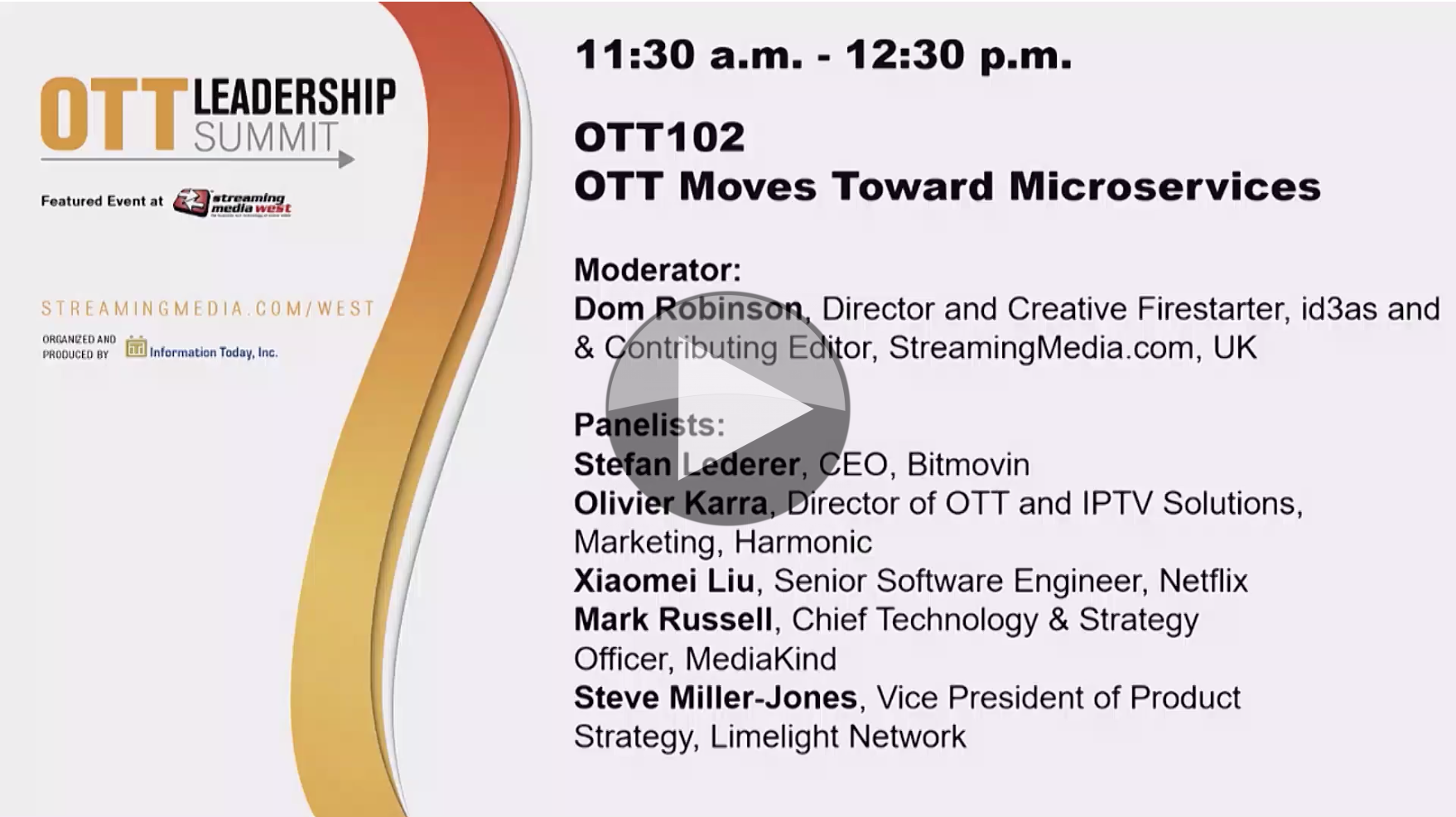Low latency streaming is always a compromise, but what can be done to keep QOE high?
This on-demand webinar looks at CMAF and presents some real-world data on this low latency technique. The webinar starts by explaining that CMAF is a low-latency streaming technology similar to HLS and other streaming protocols where the idea is to deliver the video as small files. Olivier and Alain from Harmonic explain how this is done and look at some of the trade-offs and compromises that are needed and introduce techniques to keep QOE high. They also look at deployment in cloud vs. on premise.
Pieter-Jan Speelmans talks about play tradeoffs and optimisations within the player. CMAF allows the buffer to be reduced and whilst a bad network may mean you buffer is similar to ‘normal’, but in good networks, this buffer can be brought down significantly. He also talks about how ABR switching is impacted by GOP length even in CMAF.
Viaccess-Orca explains how DRM works with CMAF and looks at some of the challenges including licences acquisition time and overloading licence servers at the beginning of events. Akamai’s Will Law explains some benefits of CMAF and the near-real-time of chunk-based transfer (HTTP 1.1) and how downloading chunks at full speed leads to problems when the same broadband link is used by several clients.
There are lots of good talks on CMAF, but this is one of the few which talks about CMAF not as theory, but as is deployable today.
Speakers
 |
Olivier Karra SaaS Business Development Director, Harmonic Inc. |
 |
Alain Pellen Sr. Manager, OTT & IPTV Solutions, Harmonic Inc |
 |
Will Law Chief Architect – Media Devision, Akamai |
 |
Pieter-Jan Speelmans Founder & CTO, THEOplayer |
 |
Nicolas Delahaye VP Engineering Player, Viaccess-Orca |



